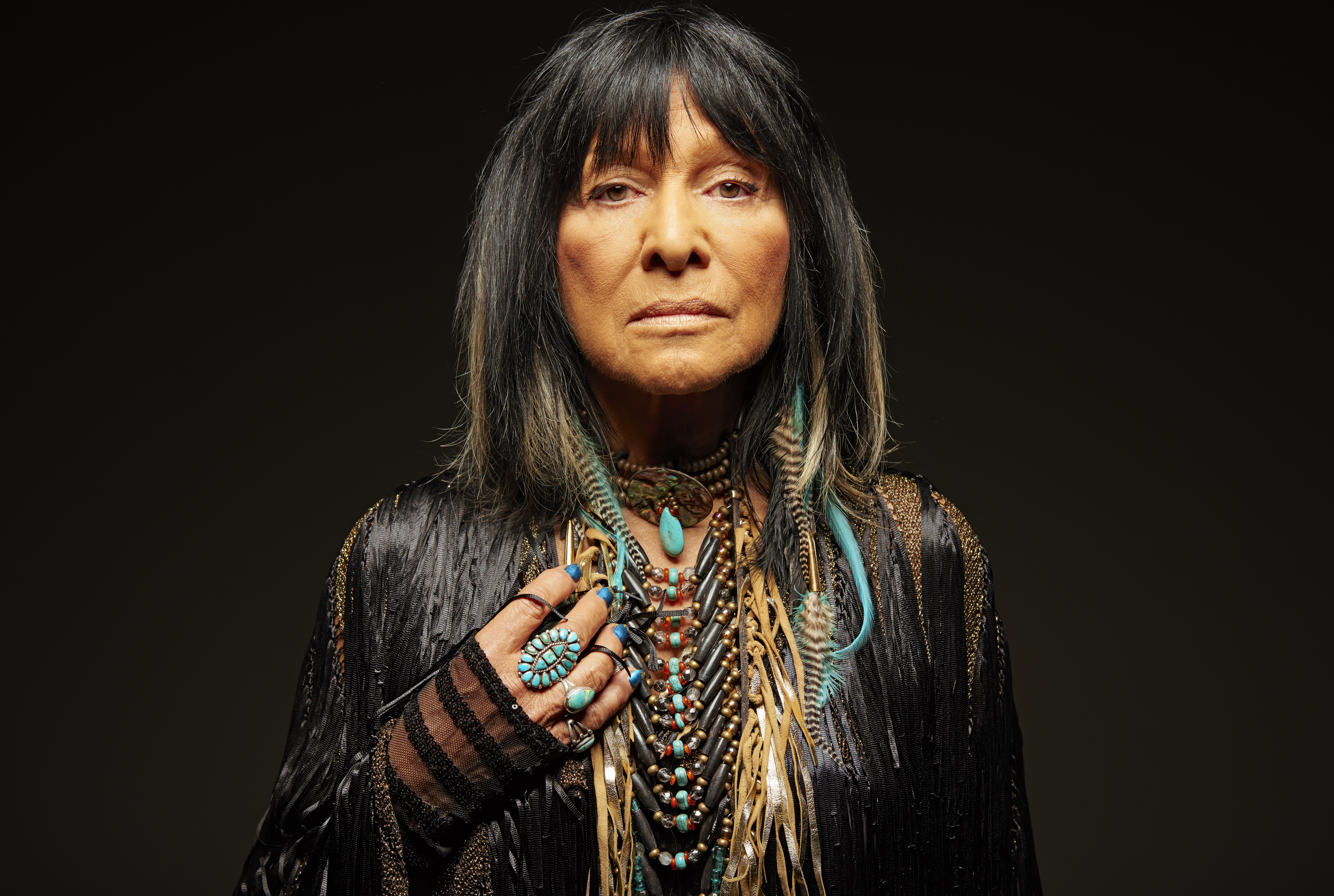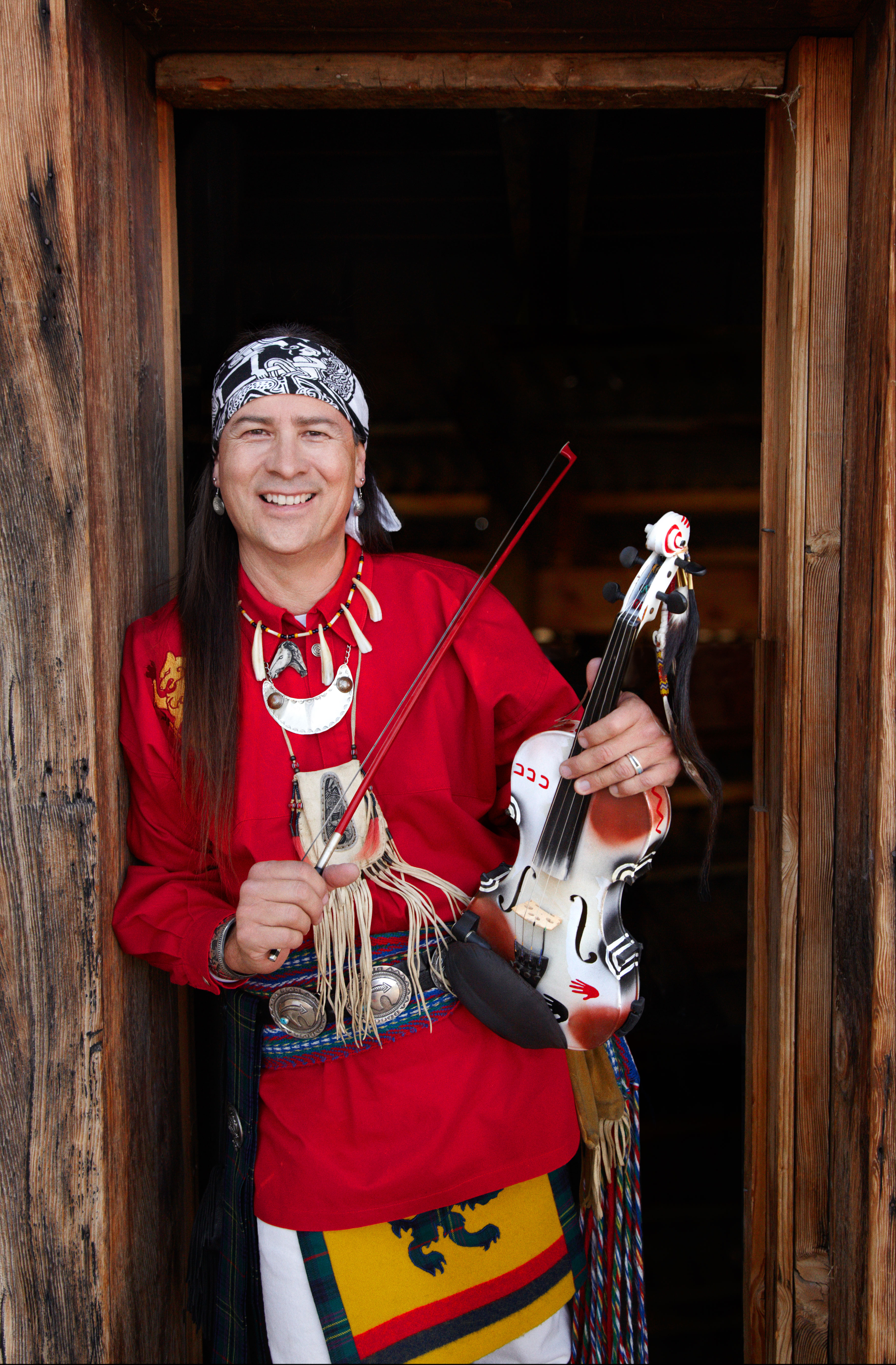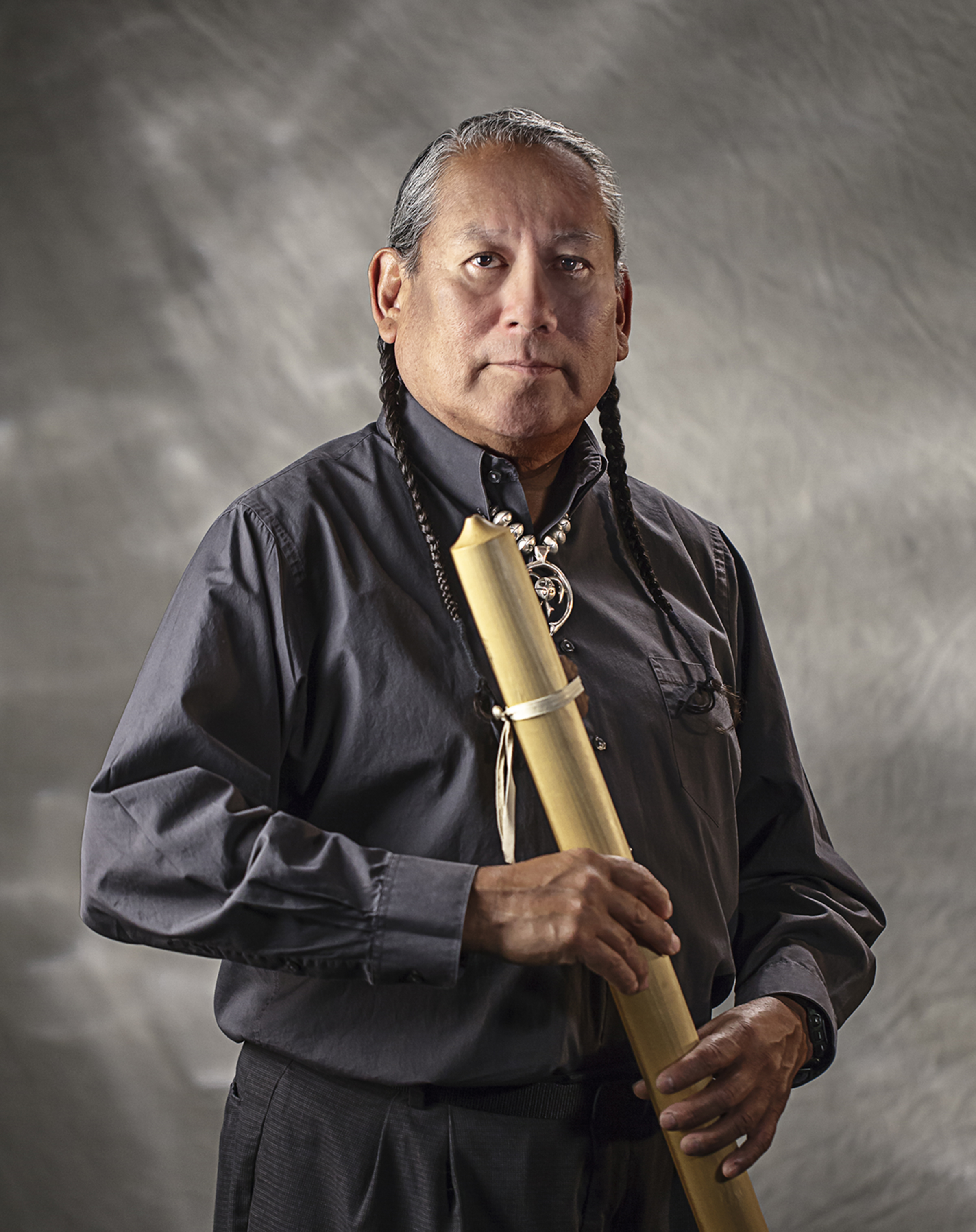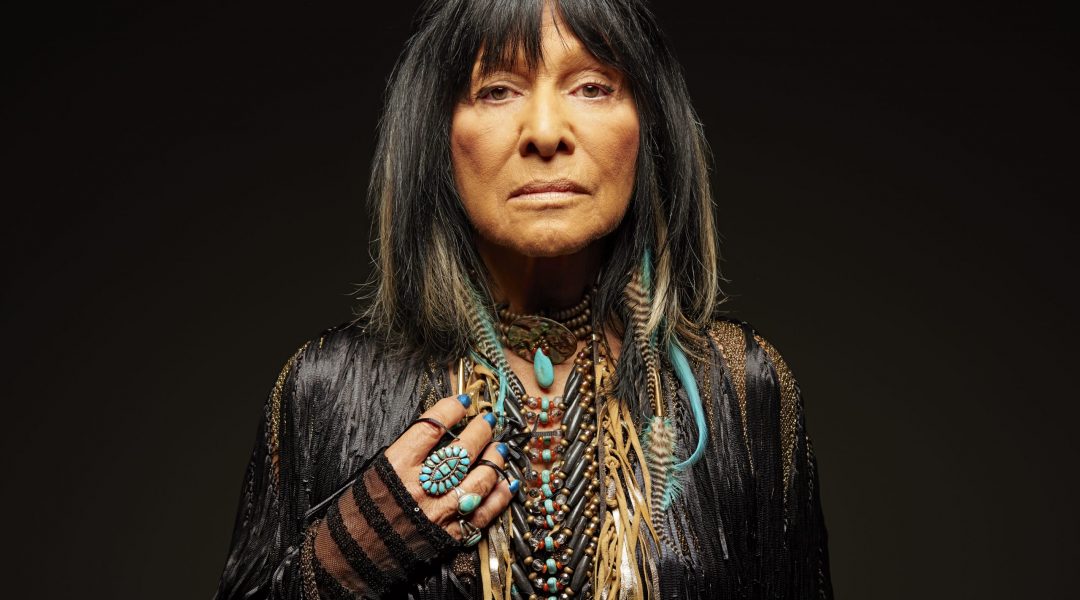
Here’s a rundown of the latest from four of our favorite artists contributing to today's Native American music.
In addition to Samantha Crain, one of the new artists profiled in the January 2016 issue, we sat down with the old guard to talk about their latest releases: Buffy Sainte-Marie, Arvel Bird, R. Carlos Nakai, and Joe Tohonnie Jr.
Native American Musicians
Buffy Sainte-Marie (Cree)
Latest album: Power in the Blood
Standout track: “It’s My Way”
Classic cuts: “He’s a Keeper of the Fire,” “Until It’s Time for You to Go”
Born in Saskatchewan, Canada, and raised as an adopted daughter in Massachusetts, Cree singer-songwriter Buffy Sainte-Marie remembers being in preschool and writing stories and songs as the other kids played ball or dolls or board games.
“When I started singing, I had already been making up songs for years. It’s just what I did for fun,” she says. “I was able to make the music I did because I didn’t have anyone scolding me into their own prejudices. I wrote about everything. ... But when I started out, I didn’t think I was much of a singer. I did it because I wanted to share my songs.”
Those songs famously included her views of the Vietnam War and the struggles of Native American and First Nations people, and they made Sainte-Marie a fixture on the folk music circuit. Her masterful writing and iconic voice — as well as prominent exposure on shows such as Pete Seeger’s Rainbow Quest, The Johnny Cash Show, and Soul Train — are perhaps why her work from that era is so revered.
“Not only most songwriters and most musicians but also most audiences stick with what they liked in high school,” she says. “A lot of people approach me and say, ‘You were that protest singer’ or ‘You were a folk singer.’ ” She is those things and more, including an educator, artist, and scholar, having earned degrees in teaching and Oriental philosophy and a doctorate in fine art. Perhaps it’s that breadth of education and experience that has enabled her to continually surprise fans musically as she moved from folk to country to rock and had songs covered by everyone from Donovan to Courtney Love.
Her latest album, Power in the Blood, sees Sainte-Marie trying on electronic rock with an urban edge. While it may surprise others, the songs seem natural to her. “These songs just popped into my head,” she says. “Most of my songs come from out of nowhere.”
She’s convinced her willingness to follow such a muse is the reason her career has lasted as long as it has. “I didn’t think it would last. I didn’t want to be Joan Baez or somebody. I just figured whatever the genre of song I’m lucky enough to intercept, I’ll do. They’ve always been pretty unique.”

Arvel Bird (Southern Paiute)
Latest album: Animal Totems 3
Standout track: “KOBRA”
Classic cuts: “Rockness Monster,” “Great Blue Heron”
Arvel Bird, the self-described Celtic Indian, was born in Utah, grew up in Arizona, and keeps a residence in Nashville. But he truly believes his home is the road. In a way, his lack of a geographic anchor is akin to the half-Native American descent, half-Scottish heritage that has inspired him to use Native flutes, Irish whistles, violins, and fiddles to create his signature world music.
Although he was classically trained in violin, this versatile musician found himself in Nashville playing bluegrass, folk, and other genres, including country with Glen Campbell’s band. The mix-and-match of influences inspired him. “All of these genres were swirling around in my head, and I took up the violin to see what would come out,” he says. “The music touched something inside of me and made me weep. It expressed everything I felt about identity and connection.”
Bird uses his musical voice to move from fiddle tunes (Red River Jig) to spoken-word albums of Native stories (Storyteller) to a tribute to the passengers of the Titanic (Titanic Centennial). He’s now at work on a series of albums honoring endangered species.
“I started getting involved in some rescue sanctuaries in Florida, one of the biggest states to rescue tigers,” he says. “I’ve heard there are more tigers in Florida than in the wild. I got to spend some time with the rescuers of tigers, lions, snow lions, leopards, monkeys, and lemurs. I got to hear their stories of the rescues and how they felt about these animals that are endangered in the wild. Hearing about animals hunted to extinction and pushed out of their habitats, [I realized] it won’t be stopped unless we raise awareness. That’s very important to me.”

R. Carlos Nakai (Navajo/Ute)
Latest album: Ritual (with Peter Kater)
Standout track: “Meeting at Twilight”
Classic cuts: “Kokopelli Wind,” “Dreamscapes: Canyon People”
R. Carlos Nakai knew he was taking a chance in 1989 when he recorded Canyon Trilogies. He had a cedar flute and was determined to create a haunting sound, something that spoke to listeners’ entire beings rather than just their ears. As he recorded the 17 tracks of the album, most in just one take, the music became very personal and he found himself sinking into the songs, improvising more freely as the sessions progressed.
“It was nothing like anything I had done before,” Nakai says. “We were hesitant to release it. We didn’t know how it would be received. We didn’t know what the sales would be. But then we said, ‘Let’s see what happens with it.’ ”
What happened was the sound created a new benchmark for Native American flute music. It also created an album that was certified platinum by the Recording Industry Association of America in 2014 after selling 1 million copies. The certification is the first for a Native American artist playing Native music, according to the Native American Music Association.
Nakai began to play Native American flute in the 1980s almost by happenstance. Classically trained in trumpet and music theory, he had to give up the instrument when his embouchure — the use of facial muscles and the shaping of the lips to the mouthpiece — was damaged in a car accident. “When the accident occurred, it felt like the end of the world to me,” Nakai says. “I came home and found [a flute decoratively] hanging on the wall and took it apart to really see how it worked.”
He began going to powwows to hear the flute played and began talking to players. As he discovered familial ties to the flute and its Native history, he found it “more and more intriguing.” Soon it became his instrument of choice. Today, Nakai’s flute catalog includes work in an array of genres including jazz and classical.
“A lot of it is just my interest and wanting to again keep the sound of the instrument and the tradition of performing solo music with this instrument in the public eye,” he says. “I want to keep the music alive.”
Joe Tohonnie Jr. (Navajo/Apache)
Latest album: Ceremony
Standout track: “Rain Full of Joy”
Classic cuts: “Bird Song,” “Blessing of the Mountain Spirit”
Joe Tohonnie Jr. never intended to spend his life making spiritual music and leading a dance troupe. But when he was 6 years old, his grandfather told him that he had to learn and practice the music, dances, and blessings of his people. “I said I didn’t want to do it and tried to make him see that. I wasn’t given a choice,” Tohonnie says. “Now I know it was my destiny.”
Tohonnie and his Apache Crown Dancers travel throughout the United States performing sacred dances and indigenous music and providing blessings at the gatherings. It’s not a commercial venture, he says. “I am not a traditional singer. I do this for my people in the tradition of my grandfather.”
Tohonnie generally records and distributes his music for free. Two of his records — Apache Blessings & Crown Dance Songs and Ceremony — have won him highly coveted Grammy Award nominations for Best Regional Roots Music Album.
But it’s the music, more than the awards, that has won him a cross-cultural fan base. Tohonnie says he’s quick to point out to Native American kids with musical aspirations that they should not try to replicate his style but should instead hone their individual talents. Tohonnie believes that’s the way Native American music and traditions will continue to spread.
“My greatest goal is to have my culture and our traditions out there in the world,” he says. “I want to let the world see that you don’t have to be Native American to enjoy and be blessed by these things. We are all human beings — we’re all from the same blood, the same bodies, the same hearts. I am just so honored to have people inspired by my music.”
Although he seems elated by the nominations, Tohonnie’s real work isn’t in the studio but on the road, traveling with his dancers. “What we do is a blessing,” he says. “We do not do this to make money or gain fame. We do this to help people. All we ask is that those people remember us in their prayers.”
Native American Heritage Month is celebrated in November. Fortunately, the indigenous musicians, Native American art, and traditions can be celebrated all year long through














